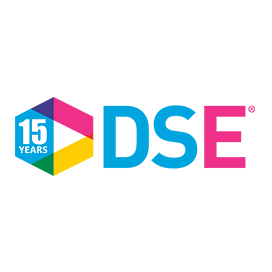
![]() by Jeff Hastings, CEO of BrightSign, LLC
by Jeff Hastings, CEO of BrightSign, LLC
With Integrated Systems Europe now in the rear-view mirror, our industry turns its collective attention to Digital Signage Expo later this month in Las Vegas. DSE isn’t the biggest tradeshow we attend in the US, but it’s certainly the show that’s most focused on digital signage. For that reason alone, I find DSE to be an accurate barometer of what to expect in the year ahead.
The digital signage industry is made up mostly of perennial attendees – companies like BrightSign that have been coming to DSE for many years, and that will still be attending years from now. But every year there’s a sizeable crop of first-time exhibitors – last year, of the 255 companies on the show floor, 74 were first-time exhibitors. If those numbers hold true this year, that means nearly three of every 10 exhibitors will be attending for their first time. These new exhibitors seem to fall into two camps: relatively unknown startup companies trying to get into the market, and well-known tech brands trying to make a sideways entry into the digital signage space. I’m particularly intrigued by the latter. Our market has grown far beyond its traditional “signage” roots and it’s understandable that big companies will attempt to wedge their way into our market to make a quick buck.
You may recall a couple years ago Google made a big splash at DSE. Chromebooks in education were on the rise, and there was a lot of buzz about whether Google would replicate similar proliferation of Chromeboxes (a “desktop” version of the Chromebook) and disrupt the digital signage market. After all, the Chrome browser platform was familiar to developers, and customers were enticed by the Chromeboxes’ low price-points. Ultimately these devices had very low penetration into the digital signage space as only one manufacturer produced a “commercial” version of the box. Long story short, Google made a short-lived attempt to take over the digital signage space. Last I checked, they were not even planning to attend DSE in 2018.
If you’re planning to visit DSE this year and you find yourself in discussion with some of the first-time exhibitors, make sure to ask about their pedigree – do they have roots in digital signage, or are they new to the space? And ask them about their plans. Are they dipping a toe in the water like Google did, or are they committed for the long haul? These are leading questions, and important topics to explore before investing further time or money with a company that’s new to this market. Digital signage deployments have extended roll-outs with long-tail service and support requirements. These extended roll-outs need to be comprised of technology that will remain relevant for years to come.
I always try to see things from the perspective of our customers. Whether those customers are distributors, integrators or end-users, they have a shared desire to invest in technology that’s built specifically for digital signage implementation. And equally important, they want to source products with a long life, from companies that will be relevant and innovating in the digital signage space years from now.
About the Author

Jeff Hastings
BrightSign CEO Jeff Hastings joined BrightSign in August 2009 while it was still a division of Roku Inc. In late 2010 with digital signage activities growing so rapidly, BrightSign became a separate firm. The holder of eight U.S. patents, he also has a history of tech industry leadership, including as president of mp3 pioneer Rio.






